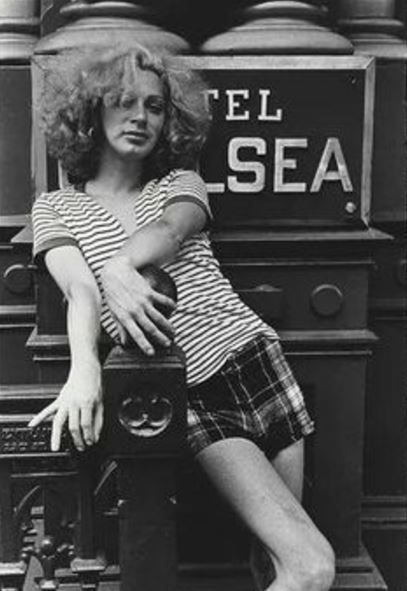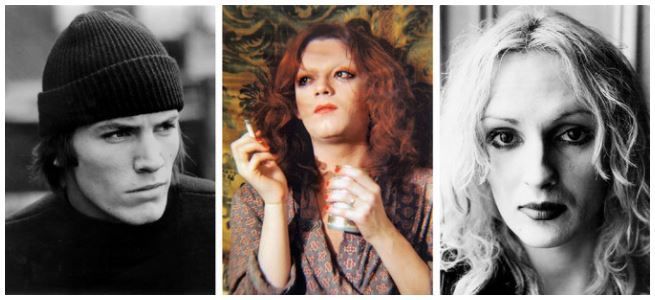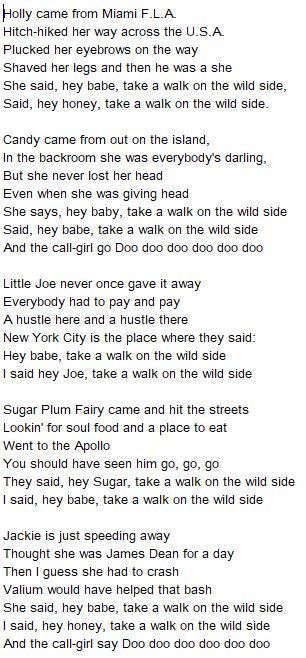5 Août 2017
La première traduction en français vraiment documentée et recherchée pour cette chanson de 1972 de Lou Reed, produite par David Bowie et Mick Ronson à Londres.
The first ever really documented translation of this 1972 Lou Reed song produced by David Bowie and Mick Ronson in London.

Quelques infos à savoir sur les personnes qui sont nommées dans cette chanson. Some info and pics about the characters named in the song:
- Candy Darling, Holly Woodlawn, Jacky Curtis étaient des actrices transsexuelles. They were transsexual actrices:

- Sugar Plum Fairy était le surnom de / was the nickname of Joe Campbell, acteur/actor.
- Little Joe celui de/ that of Joe Dallesandro, acteur/actor. Tous les deux ont joué dans des films de Andy Warhol. Both acted in Andy Warhol's films.
Quant à la "soul food", c'est la cuisine traditionnelle du sud-est des Etats-Unis. Soul food is the traditional southern US food.
Le titre, Take a walk on the wild side, est la phrase de racolage des prostituées transsexuelles de NYC.
The title, Take a walk on the wild side, was actually the NYC transsexual hookers' catchphrase.
Joe Campbell, alias Sugar Plum Fairy :

Holly Woodlawn, née Haroldo Santiago Franceschi Rodriguez Danhak :

Andy Warhol with Candy Darling :

Jacky Curtis, née John Curtis Holder Jr. :

Joe Dallessandro, aka Little Joe:

Little Joe, Jackie Curtis et Holly Woodlawn

Press : New York Times Neatorama

Ma tradcution des paroles / My French translation of the lyrics
Lou Reed - Viens Voir Du Coté Wild
Holly venait de Miami en Floride
Il fit du stop à travers les USA
Il s'épila les sourcils en chemin
Rasa ses jambes et alors il devint elle
Elle dit hey babe viens voir du coté wild
Hey chérie viens voir du coté wild
Candy venait elle de Manhattan
Dans les backrooms elle se donnait à tous
Mais elle n'a jamais perdu la tête
Même quand elle faisait des pipes
Dit hey babe viens voir du coté wild
Hey chérie viens voir du coté wild
Et les call-girls font : doo, doo, doo, doo....
Little Joe ne baisait jamais gratis
Tout le monde devait banquer encore et toujours
Un coup par ici, une passe par là
New York City c'est l'endroit cool disent-ils
Hey babe viens voir du coté wild
Hey chérie viens voir du coté wild
Sugar Plum Fairy vint et fit le trottoir
Cherchant de la soul food et un endroit où manger
Il alla au club Apollo
T'aurais du les voir se donner à fond
Ils disaient hey babe viens voir du coté wild
Hey chérie viens voir du coté wild
Jackie elle s'évade par les amphètes
S’est prise pour James Dean une journée
Puis faut croire qu'elle a fait une descente
Le valium a dû l’aider dans ce bad trip
Dit hey babe viens voir du coté wild
Hey chérie viens voir du coté wild
Et les call-girls font : doo, doo, doo, doo....
Mes autres traductions de textes de Lou Reed :
http://www.rocktranslation.fr/tag/lou%20reed/
Lou Reed - Walk on the Wild Side
